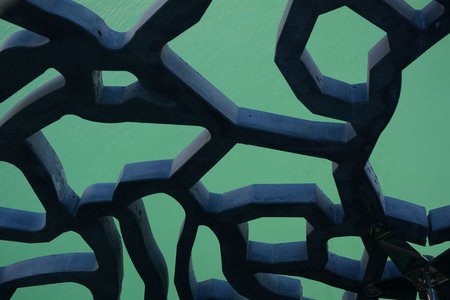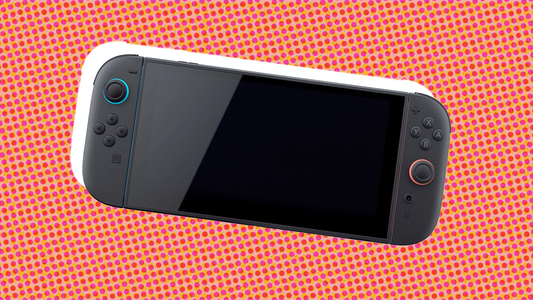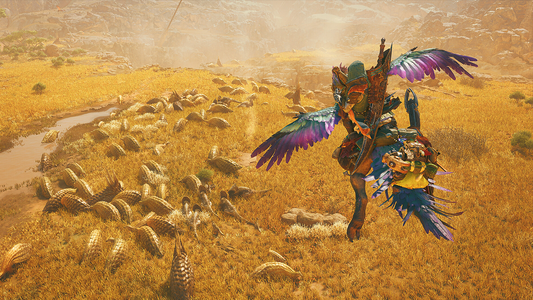With the explosion of Early Access and the philosophy of Games as Services, the lifetime of a game has changed dramatically in recent years.
In previous days, a fast internet connection was a given, games were delivered to the public in their final form. Expansions might add new content, but they generally wouldn't change what had previously existed. Nowadays however, players are faced with ever-changing games and have to adapt to this new trend.
When I last went back to my hometown, for the winter holidays, I was faced with a similar feeling while driving through the familiar landscapes yet experiencing something new. Strangely this sensation made me think of my experiences developing games in Early Access and Post-release at Amplitude Studios.
Thinking about it, I was quite impressed by the commonalities between updating a game and urban planning. This might be because they share common attributes:
There is a desire to build the best possible experience for users, considering the available resources.
They are both subject to subjective criticism built on personal experiences.
Both games and city plans need to evolve to answer not the issues raised, but the true underlying causes.
Now, let’s explore what we can learn out from that, how it can help us to approach the new life cycle of games.
Changing signals
There is this road in my hometown that used to be restricted to 90 km/h. I drove onit thousands of times while learning how to drive, and I’ve driven onit thousands more since then. However they’ve changed the speed limit now: it’s 70 km/h, and it is further reduced to 50 km/h at certain times of day.
Reducing the limit made sense, as shops and houses have been built along this previously deserted road. Even so it feels wrong to me: I’m so used to going down this road faster that being restrained feels unpleasant and unfair to me no matter how logical the limitations are. I’ve lost my freedom and can’t enjoy the same excitement as before.
This is what it can feel like for players when we change the game balance with updates. Players form habits while playing and build mental models of the game: which paths are viable, what is fun to do... The risk with updates that change gameplay values is that players need to rebuild their mental models following the update, and can get frustrated.
As designers, we need to refine the game by fixing flaws and adjusting the balance. But when we do so we need to keep in mind the following questions:
How will the changes be perceived? Will they completely change the feeling of playing the game or will they be small enough that previously valid patterns of behavior still work (albeit more or less effectively).
How will it affect player’s behaviors? Will it reinforce existing behaviors or will it encourage new ones?
For instance, let us imagine that the laser-gun weapon is really strong and used by all players. To fix it, you can either:
Decrease the power of the weapon itself,
Add counters (say, an energy shield) or improve the effectiveness of existing counters.
In the first case, you will certainly create frustration for players used to building their strategy around the laser-gun. Even if the change makes sense in terms of pure mathematics it will likely not be well received by the players: why did you just break my favorite toy?!
Still, if the decrease in effectiveness is low enough, it will not bother most of the players, who will probably not even notice the change.
In the second case you can decrease the effectiveness of the weapon just as much without vexing players by rendering their prior understanding of the item entirely obsolete. After all the weapon in isolation is just as strong as it always was, it’s only less strong in practice given the new context (new or stronger counters).
What’s more, encouraging players to use a strategy that counters an effective one, rather than discouraging the use of said effective strategy, provides opportunities for countering the counter and so creates new competitive play dynamics.
To balance a live game the key is rebalancing underused content to counter overpowered content, rather than directly reducing the power, or “nerfing”, the overpowered content to a level that fits the rest of the game.
You can also add new content instead of rebalancing the existing one, but beware of “content creep”.
Changing the layout
During my last visit in my hometown, I took time to visit a friend I had not seen for years. I passed my high school going towards downtown and got lost. Some roads appeared, new roundabouts, I had no idea where I should go. At that moment, I experienced an irrational feeling of fear and sadness: I was not at home anymore. The world had changed.
Many people experience a similar feeling when the global layout changes: a road is removed, a bridge is added. When this happens you need to re-draw your internal maps, destroy and rebuild your mental model. The removal or addition of constraints can also trigger this need to rebuild: adding a “one way” sign, for instance, or transforming a yield sign into a stop sign.
As players dive into your game, they learn its rules bit by bit, completing their mental maps of your systems. This exploration is part of the pleasure, and discovering new connections, and unnoticed consequences to actions can be thrilling! But being forced to throw away this acquired knowledge is frustrating....
When updating a game system on a live game, I would recommend keeping in mind the following rules:
Don’t increase the level of complexity! To fix a system that does not work properly you shouldn't add layers that will make it harder to understand; the new system should impose a similar cognitive load on the player. Otherwise, you might draw undue focus to the system and change the overall game experience by shifting the relative importance of the different game systems. Obviously you can break this rule if you want to give more importance to a system on purpose.
Don’t deviate from your intention! When reworking a system that is not as interesting as planned, it’s easy to move beyond the boundaries you initially defined. Still, it’s important to use these constraints to be creative and to find a solution that will serve the game instead of starting again from scratch. Try to keep as many elements as possible, and focus on how to rework them elegantly, to either modify the input or the output (Ideally, you modify only one of the two for a given iteration).
Early Access is meant to be a way of building up your game with the community, and should allow you to test options. While reworking game systems during Early Access is generally accepted by players, it becomes less acceptable to do so after the release - even if it’s for the greater good. There are plenty of examples out there of resistance to change from players post-release.
Here we can draw a parallel between urban planning and game development: accepting changes during Early Access is similar to accepting temporary constraints due to ongoing roadworks, whereas changes post-release are like a new change to road-signage which forces you to change your daily commute.
The same negative feeling often occurs when developers remove content. Adding content is a normal thing to do as game development progresses, though we’ll still need to discuss adding content a bit later. For now, let’s focus on the removal of content as part of the life-cycle of a game.
Game systems can be invisible for players, thus they will not build a strong attachment to them. It can be hard to differentiate the deletion of a system from the modification of an existing one, or even the addition of a new one. Players will have their own mental model of the game and might have their own vision of what systems make up the game, and this vision can deviate wildly from the designers’. And, let’s face it, players can even have a better idea than the designers of how the game really works (we designers are often more concerned with how it should work than how it actually does). But anyway, this doesn't really matter for us.
On the content side, however, it’s more delicate. Content is the fixed, physical reality that players interact with. Deleting it is immediately visible and loss aversion means that it will essentially always be missed. When a player launches a game and can’t find his or her favorite weapon, their emotional reactions can be irrational and strongly negative, even if the change actually improves their game experience.
During the Early Access periods of our games we often removed technologies, as the Tech Tree of a 4X game evolves a lot as player feedback is collected and new features are introduced. As it’s the foundation of the 4X game experience we’ve always spent a lot of effort making it as good as possible. In the end, the conclusions we drew were the following.
Do not remove content from your game. It’s better to either:
Replace it: the old content is gone, true, but something new is unlocked / placed exactly where previous content was.
Loss aversion might still hit players, but it will be partially compensated by what they gain. We can bet on the renewal of the experience and the joy of the discovery to lessen the frustration.
Revamp the element completely: keep the name but drastically change how it behaves in order to reach your objective.
The second option is useful when you need to change an element with a strong connection between lore and gameplay.
The danger of such a solution is that players can miss the change and keep playing as they previously did. This might seem like a good thing except that when they finally do notice the change it will be in a context of failure, when an unexpected outcome occurs. This can be avoided by using dedicated signs (highlighting with an exclamation mark the element that has been updated for instance).
The other challenge is the acceptance of the new effects. Players need to agree that the new effects make sense and are a good substitute for the previous ones. To support this process you can play around with:





































